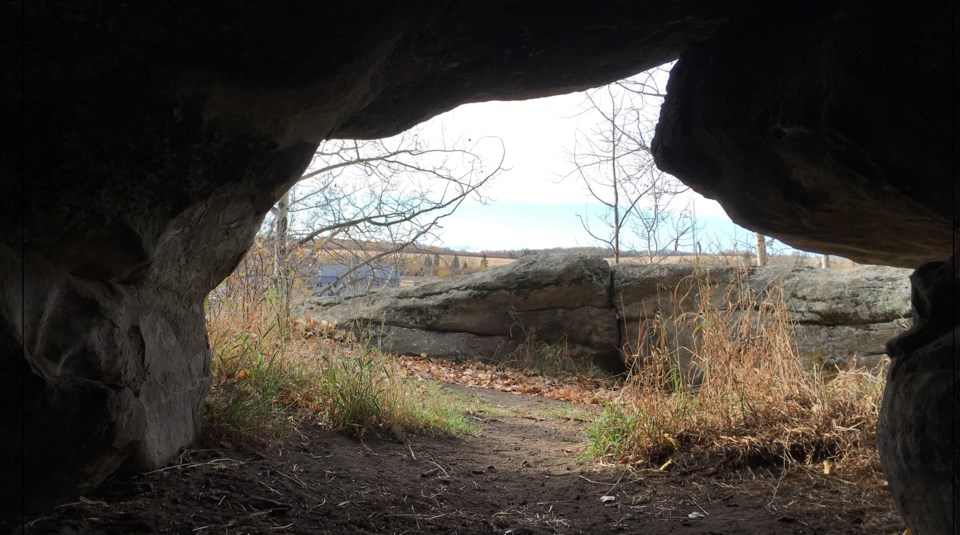Elders from local First Nations have recently been recording oral histories of Tse’K’wa, also known as the Charlie Lake Cave, capturing the cultural and personal significance of the national historic site, which has been an Indigenous gathering place for more than 12,000 years, says Tse’K’wa Heritage Society executive director Alyssa Currie
“We’ve been working with a number of elders, and recording some of the oral histories about Tse'K'wa and hearing it directly from the elders about why the site is important to them," she said. "So much of what has been written and publicized about is from an archaeological perspective, which is incredibly valuable, but it's also high time that the Dane-Zaa cultural and spiritual significance take centre stage."
Tse’K’wa is a sacred and spiritual place for the stakeholder First Nations of Doig River, Prophet River and West Moberly, with their ancestors first using the site to hold ceremonies. It's one of the few sites in Canada with a complete record of highly-preserved animal bones and artifacts from the end of the last ice age to the modern day.
The recordings will be preserved in community archives and used to help develop future exhibits, as the site's long term mission is to be an indigenous cultural centre.
Scavenger hunts, a story walk at Fish Creek Community Park, a provincial photo contest, buddy reading, and tours at the Tse’K’wa, were all held there recently as part of literacy week with the Fort St. John Literacy Society, with the community showing a lot interest and support for the site.
“We were lucky to be one of their partnering organizations, hosting a campfire and self-guided tours down” said Currie, noting over 100 people came to visit and tour the site.
Families really enjoyed coming out to spend time together and connect with the site’s history, she added.
“A huge part of the developments we’ve been doing at the site have been focused on younger audiences, audiences of all sizes, but making sure that the information is presented in a way that is approachable,” said Currie. “We heard a lot of positive feedback from people on being able to experience something with an Indigenous cultural focus,” she added.
A number of indigenous gatherings and celebrations typically take place during the summer months, and inviting people in the winter adds to the year-round value of the site, she noted.



